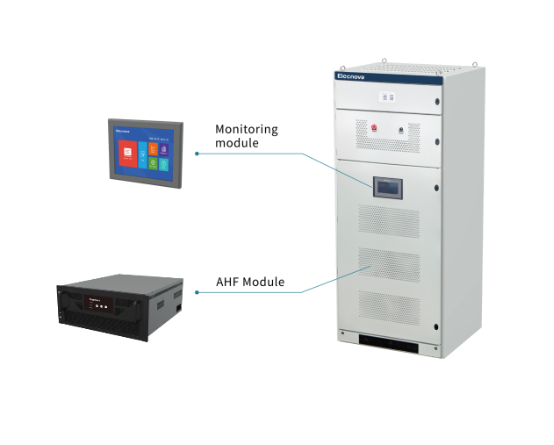one Definition of PCB high frequency board High-frequency board refers to a special circuit board with high electromagnetic frequency. It is used for PCBs in the fields of high frequency (frequency greater than 300MHZ or wavelength less than 1m) and microwave (frequency greater than 3GHZ or wavelength less than 0.1m). A circuit board produced by a part of a conventional rigid circuit board manufacturing method or a special processing method. In general, a high frequency board can be defined as a circuit board with a frequency above 1 GHz. With the rapid development of science and technology, more and more equipment design is applied in the microwave frequency band (>1GHZ) or even in the millimeter wave field (30GHZ), which also means that the frequency is getting higher and higher, and the base of the circuit board The requirements for materials are also getting higher and higher. For example, the substrate material needs to have excellent electrical properties, good chemical stability, and the loss on the substrate is very small as the frequency of the power signal increases, so the importance of the high frequency plate is highlighted. two PCB high frequency board application field Mobile communication products; Power amplifier, low noise amplifier, etc.; Passive devices such as power dividers, couplers, duplexers, filters, etc.; In the fields of automobile anti-collision systems, satellite systems, radio systems, etc., the high frequency of electronic equipment is a development trend. three Classification of high frequency boards Powder ceramic filled thermosetting material A, the manufacturer: Rogers' 4350B/4003C Arlon's 25N/25FR Taconic's TLG Series B, processing method: Similar to the epoxy/glass woven cloth (FR4) process, but the board is brittle, easy to break, drill and The life of the drill and the boring tool is reduced by 20%. PTFE (polytetrafluoroethylene) material A. Manufacturer: Rogers RO3000 series, RT series, TMM series Arlon's AD/AR series, IsoClad series, CuClad series Taconic's RF series, TLX series, TLY series Taixing microwave's F4B, F4BM, F4BK, TP -2 B, processing method: 1. Unloading: The protective film must be kept to prevent scratches and indentations. 2. Drilling 1. Using a new drill (standard 130), one piece is optimal, the presser pressure is 40 psi. 2. Aluminum sheet is Cover plate, then use 1mm melamine pad to tighten the PTFE plate. 3. Drill the dust in the hole with the air gun after drilling. 4. Use the most stable drilling rig. The drilling parameters (basically the smaller the hole, the faster the drilling speed). The smaller the Chip load is, the smaller the speed is.) 3. The hole treatment plasma treatment or sodium naphthalene activation treatment is beneficial to the hole metallization. 4.PTH copper is slightly micro-etched (the micro-etching rate is 20 micro-inch control), and the PTH pull-off After the cylinder starts to enter the plate 2, if necessary, pass the second PTH. It only needs to enter the plate from the expected cylinder. 5. Soldering 1 Pre-treatment: Acidic washing, not mechanical grinding 2 Pre-treatment (90 ° C, 30 min), brush green oil solidified 3 points three-stage slab: a section of 80 ° C, 100 ° C, 150 ° C, time 30min each time (if found on the substrate surface oyster sauce, you can rework: wash the green oil, Reactivation treatment) 6. The slab is placed on the PTFE plate line surface, and the FR-4 substrate plate or the phenolic bottom plate is etched with 1.0MM thickness to the upper and lower sides, as shown in the figure: High-frequency plate stacking method The back edge of the backboard needs to be carefully scraped by hand to prevent damage to the substrate and copper surface, and then separated by a considerable size of sulfur-free paper, and visual inspection, to reduce burrs, the focus is 锣The board process should have a good effect. four Process flow NPTH PTFE sheet processing Cutting-Drilling-Dry Film-Inspection-Etching-Erosion Inspection-Resistance-Character-Spray-Forming-Test-Final Inspection-Packaging-Shipping PTH PTFE sheet processing Cutting-Drilling-Hole Treatment (Plasma Treatment or Sodium Naphthalene Activation Treatment)-Sink-Board-Dry Film-Inspection-Graphic-Etching-Erosion-Resistance-Character-Spray-Forming-Test-End Inspection - packaging - shipping Fives to sum up Difficulties in processing high frequency plates 1. Sinking copper: the hole wall is not easy to copper. 2. Turning, etching, line width line gap, sand hole control 3. Green oil process: green oil adhesion, green oil foaming control 4. Each process appears strict Control board surface scratches, etc.
Power quality cabinet get electricity from switch cabinet,mainly realize power supply for high-power air conditioning, lighting, maintenance in computer room, it is usually located in the back-end of ATS switch cabinet in data room, be used for distribute power to the the backend air conditioning, lighting boxes, refrigeration units, new fan, etc.
Power Quality Cabinet,Power Distribution Cabinet,Power Control Box Cabinet,Active Harmonic Filter Cabinet Jiangsu Sfere Electric Co., Ltd , https://www.elecnova-global.com
